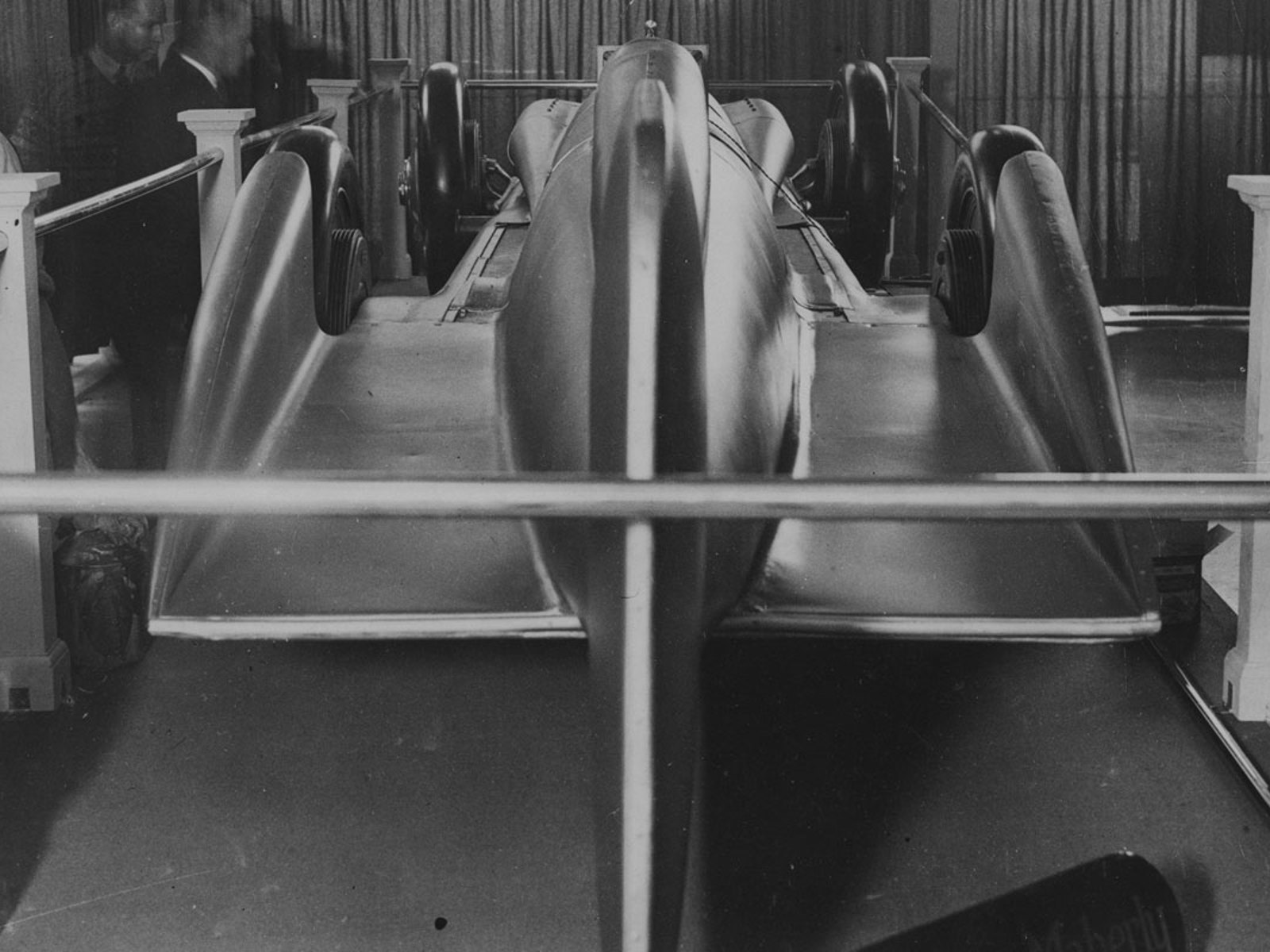
Art Deco
The Art Deco movement held a great influence over design during the interwar years, it even held a sway over automobiles.
Explore Art Deco design and discover how Golden Arrow was a product of this time and how objects associated with Golden Arrow’s victory were themselves shaped by this movement.
The influence of Art Deco design was widespread and far-reaching, from architecture and transport to mechanical engineering. These were all sectors which became influenced by Art Deco design in the early twentieth century.
The Origin of the Art Deco Movement
Art Deco is the artistic movement which derived from France and dominated design culture in the 1920s and the 1930s. Its name was inspired by the ‘Exposition Internationale des Arts Decoratifs et Industriels Modernes,’ an exhibition which took place in Paris in 1925 and propelled Art Deco design onto the global stage.
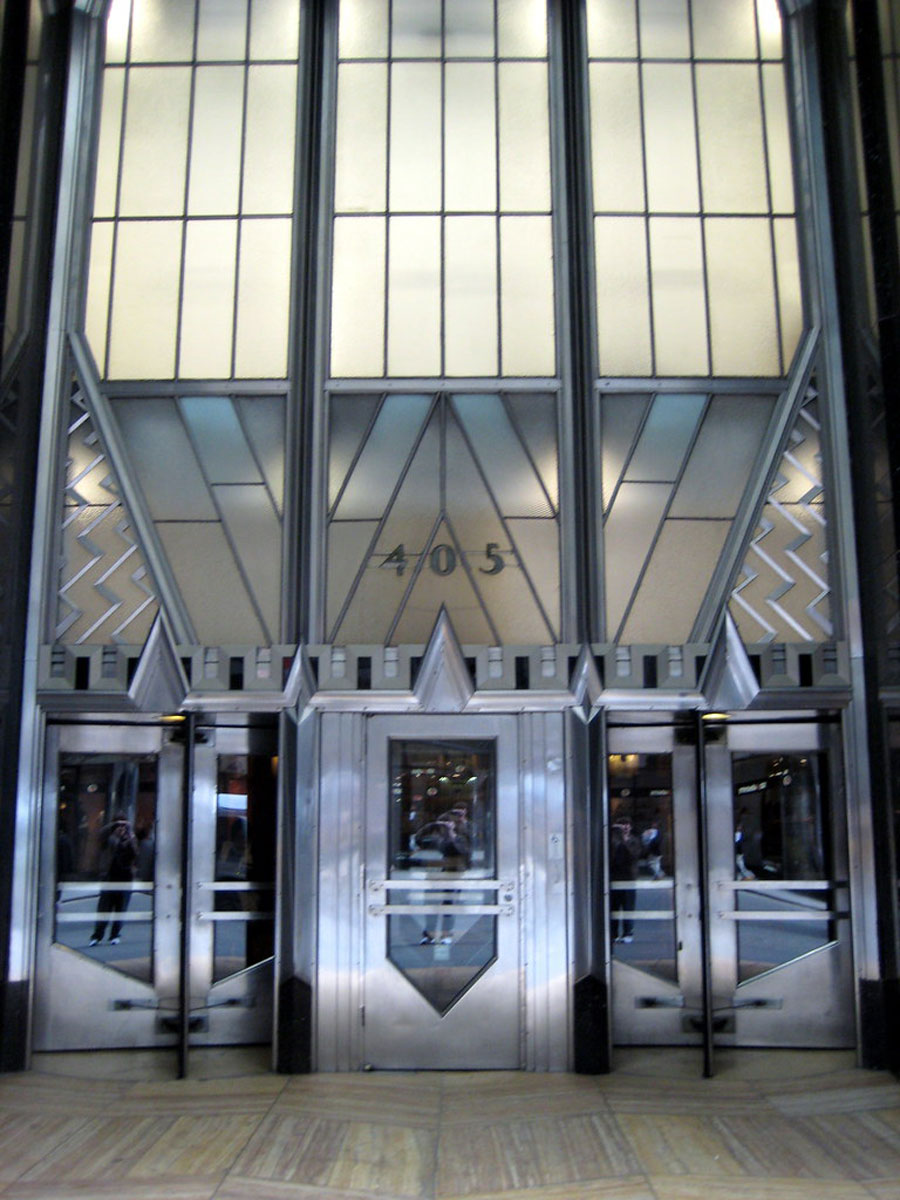
Entrance to the Chrysler Tower, NYC (TheOtter/CC BY-NC-ND 2.0 )
A major reason for the growing popularity of Art Deco was French nationalism.
French designers were becoming increasingly frustrated and angry with the increasing export of more cost-affordable German furniture.
Art Deco was born out of this frustration, as the French designers established their own unique design style which rapidly spread and found its footing throughout Europe and the United States.
Art Deco Characteristics - Colour
The typical attributes of Art Deco design include saturated, loud, and vibrant colours. After the First World War there was a strong feeling of optimism with the ‘roaring 20s’ seen as a time of fun and glamour.
Because of this the strong, bright, metallic colours of Art Deco such as gold and silver became used due to their association with wealth and status.
However, these colours did not stay constant and this form of cultural expression responded to economic changes, as seen with Art Deco design moving away from opulent colours after the 1929 Great Depression.
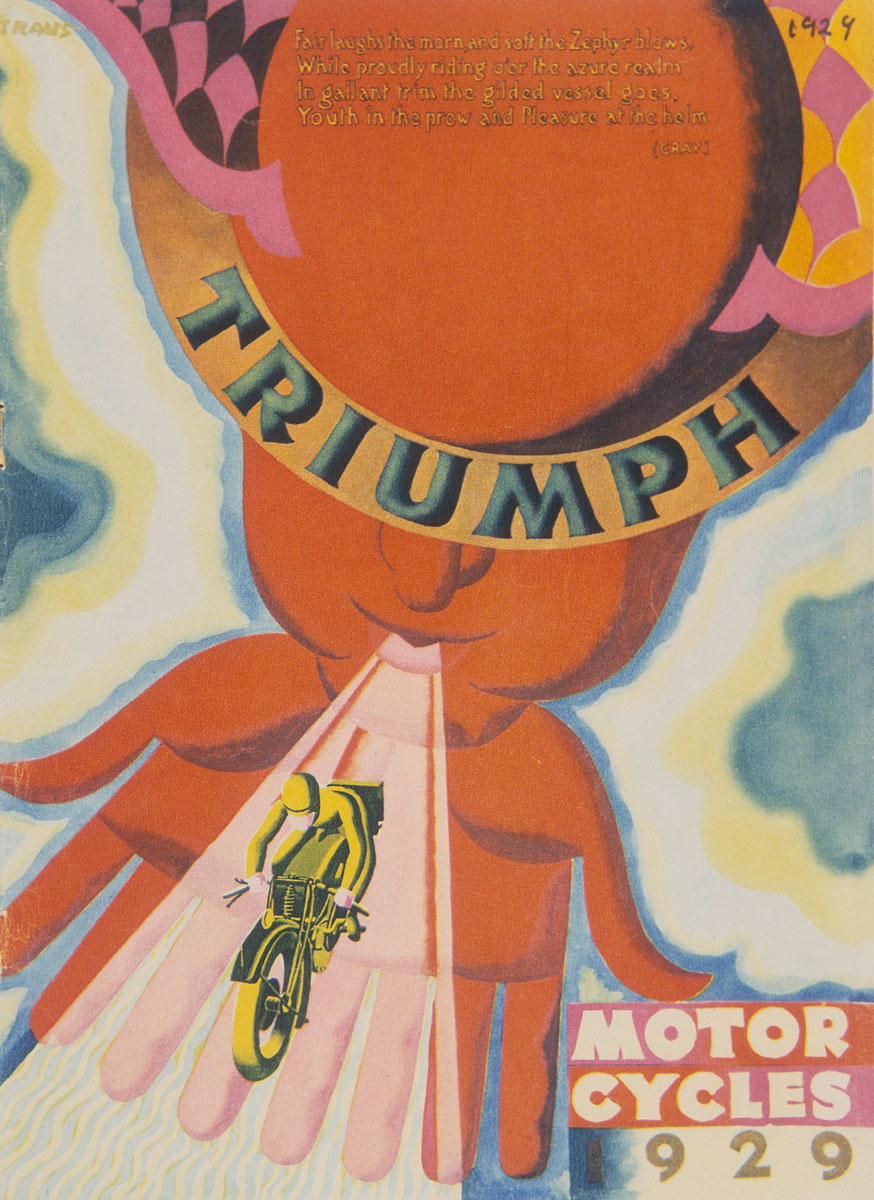
Style
One key tenet of Art Deco style is the use of geometric shapes and designs. Simply put, the term geometric refers to regular shapes with sides which are straight lines. The one exception to this is the circle, which is seen as a geometric shape given its perfect regularity, despite its lack of straight lines.
This 1929 advertisement for Triumph is typical of the style. It has the saturated colours, large circular shape, and geometric triangle which the motorbike appears to be driving away on.
Automobiles became influenced by Art Deco design given their compatibility with the geometric styles and clearly defined shapes. In addition, the increasingly saturated automobile market began to use Art Deco style to make their vehicles stand out from the competition.
The Art Deco movement spread rapidly within Britain after the First World War. Automobile design fell under this influence as their increasing popularity required new means to tell vehicles apart.
However, most of these car designs pale in comparison to Golden Arrow’s rich saturated colours and sharp geometric shape.
Golden Arrow’s Shape.
Although Golden Arrow’s shape was primarily the result of aerodynamic considerations, these changes provided the vehicle with strong Art Deco characteristics.
For example, the reduction of the frontal area and compact body for the engine provided the car with a streamlined quality which was a common feature of Art Deco design.
Interestingly, much of Golden Arrow’s minimalist frontal area could be mistaken for the Streamlined Moderne movement, but this arose after Segrave’s achievement during the Great Depression of mid-1929.
Beyond this point Art Deco’s lavishness became seen as excessive given the worsening economic situation. Therefore, Golden Arrow is best described as Art Deco in style given its characteristics representing this design movement before its shift in mid-1929.
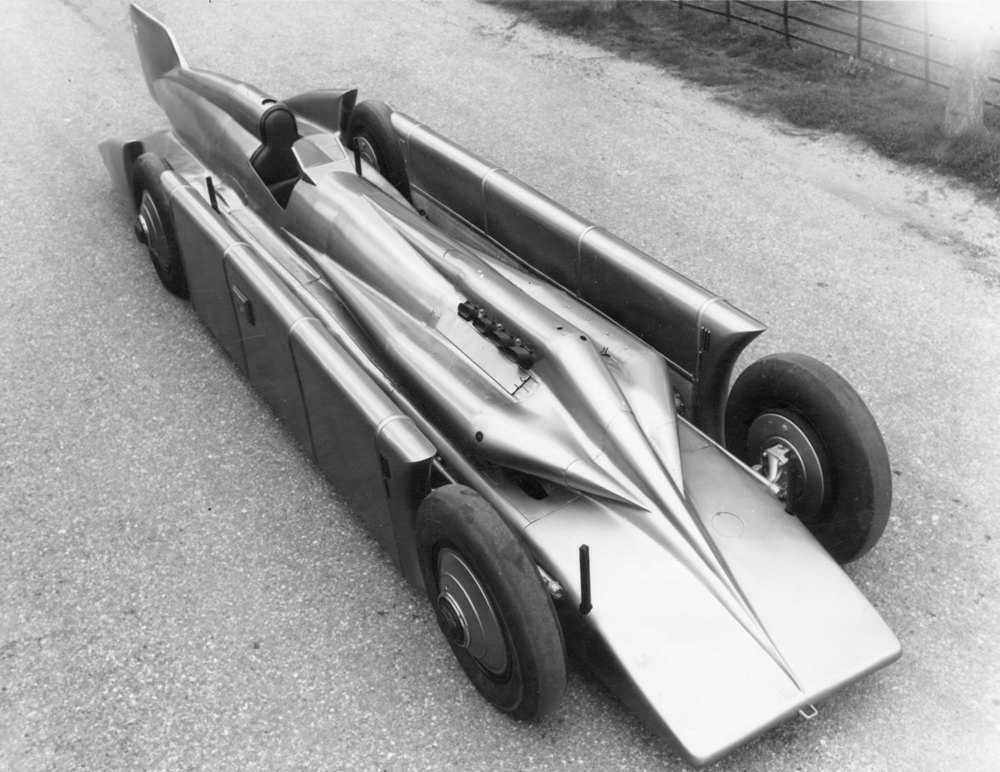
The front of Golden Arrow shows how the engine has been tightly fitted within the main body, leading to a prominent arrow shape at the front of the car.
Golden Arrow’s Style and Colour
The distinctive shape of Golden Arrow reflected several Art Deco features such as clearly defined shapes. The distance between the radiators and the main body reinforces this Art Deco style through this clearly defined boundary between these components. Elsewhere, the fairings within the wheels also add to this style, evoking a geometric pattern.
Clearly, the most obvious Art Deco inspiration is Golden Arrow’s lavish golden colour. Gold was a prominent feature of the Art Deco movement prior to the Great Depression.
The spread of gold colours, patterns, and objects signified a new standardisation that separated the machine age Art Deco movement from its handcrafted Art Nouveau predecessor in addition to a response of the opulence felt by many during the roaring 1920s.
The prominent gold colour of the vehicle set it apart from the competition. Colour played a significant role in Britain’s LSR attempts, with Malcom Campbell naming his different cars ‘Blue Bird’
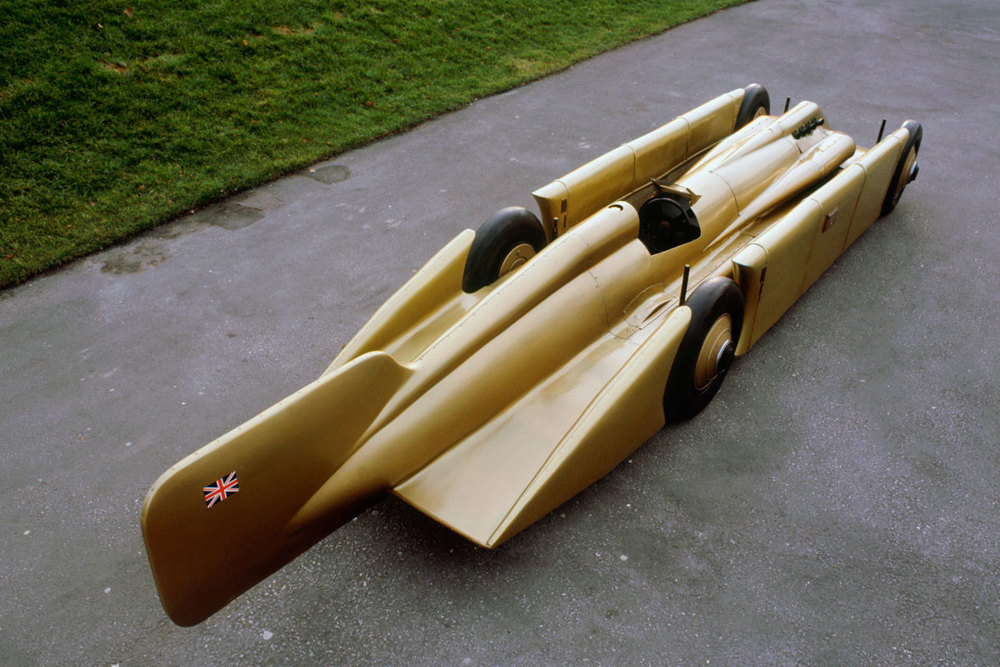
Beyond Golden Arrow
The public’s engagement with the aesthetics of Golden Arrow was no surprise given how this interest in car design and the influence of Art Deco had both become mainstream by this period.
As early as 1924, Ford adverts were describing their cars through their design features, outlining their attempts to produce new Coupe and Sedan bodies which would be the “centre of public interest this season.”
Therefore, Art Deco design was not simply limited to high performance cars and Golden Arrow was part of a broader design trend during the 1920s.
Art Deco design extended beyond Golden Arrow.
This artistic style can be found throughout Segrave’s 1929 Saga, from Lord Wakefield’s land speed trophy, to later distinctive illustrations celebrating Segrave’s victory, to his own automobile designs.
The Wakefield Trophy
The Wakefield Trophy for Maximum Speed was specifically created to honour Henry Segrave’s 1929 achievement.
The trophy was designed by Phoebe Stabler, a British artist who worked on sculptures and metalwork. The trophy’s sculpture resembles Nike, the goddess of speed.
The way that Nike’s robe has been represented as a series of straight lines takes on the quality of ‘speed lines,’ a feature used by illustrators to represent fast speeds.
The design resembles the Art Deco style through the use of the silver metal and colour to provide the trophy with a sense of opulence. In addition, the sculpture, the metal pedestal, and the marble base are all clearly defined and distinguishable from one-another: another feature of Art deco design.
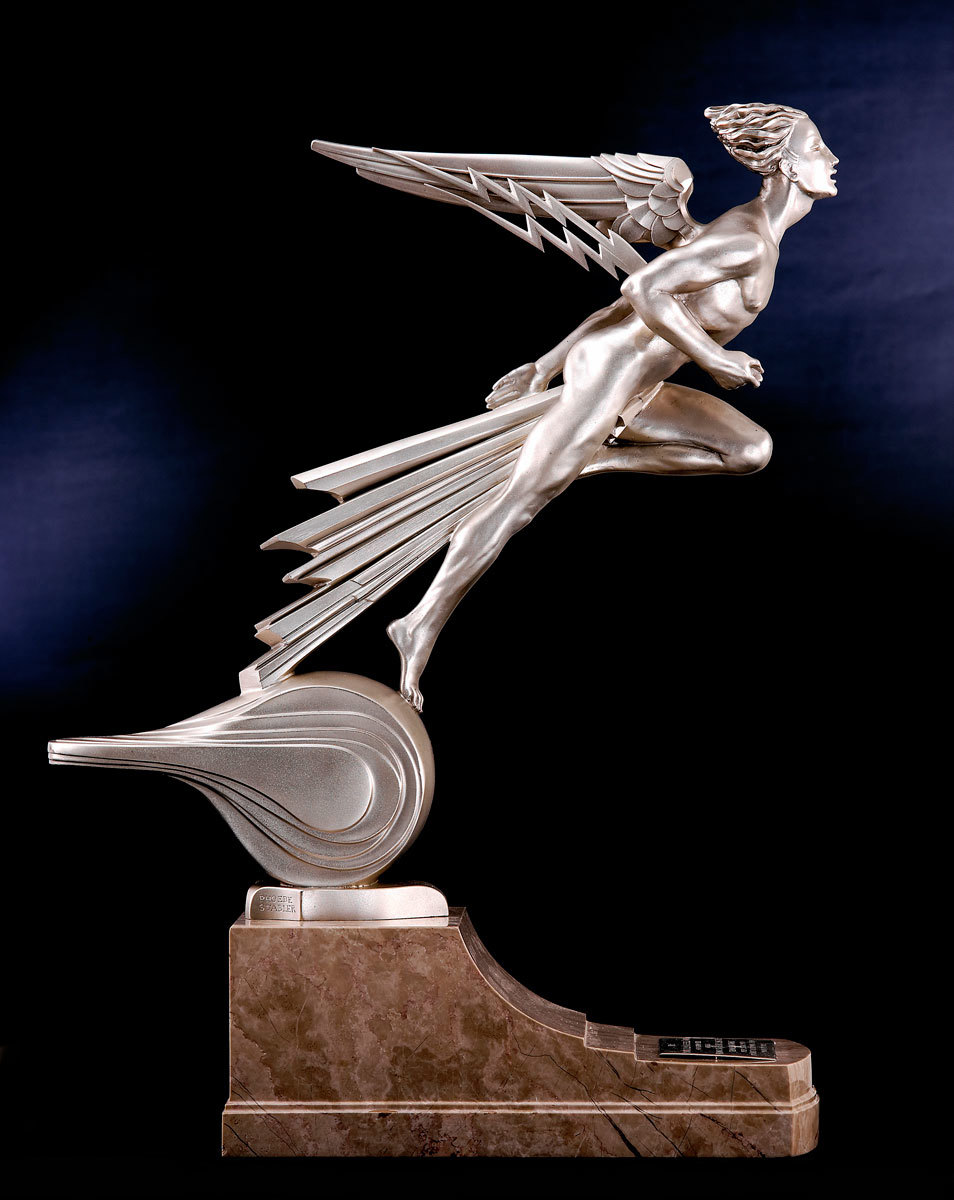
The Celebration Book
The purpose of the honour roll was to recognise the contribution of British companies towards Golden Arrow, with many of them having donated parts towards the project.
The roll itself is clearly Art Deco inspired through several distinctive features.
First, the two tabs on either side of the border are saturated with colour, with a pattern within playing a minor role in breaking this down.
Notably, this pattern does not evoke the traditional geometric designs that Art Deco was known for. However, despite this change, their golden colour and vertical and horizontal symmetry acts as evidence of Art Deco inspiration.
Whilst it’s impossible to state with certainty why the piece avoids using straight lines, it could be inferred that such a style was emulating Golden Arrow’s own curved features which had improved its aerodynamic streamlining and therefore its speed.
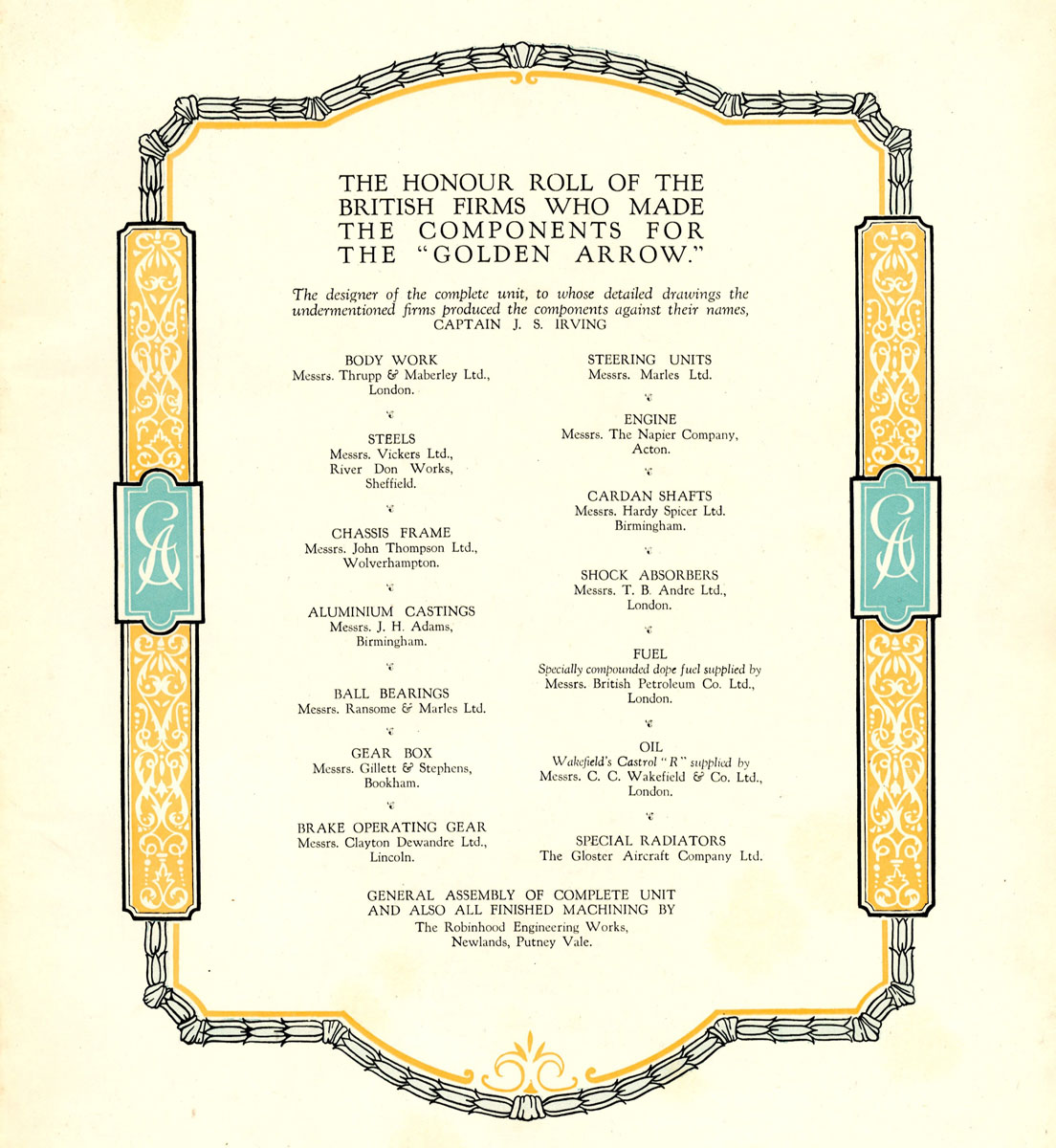
Segrave 1929 ‘Straight Eight’ Car
The below image is an illustration of Segrave’s 1929 Hillman car design, known as the ‘Straight Eight’. Its design has several Art Deco inspirations.
First, the black and red are both examples of saturated colours, a key principle of Art Deco design.
Second the red stripe running along the vehicle acts as a separator between the roof of the car and its lower body.
Third, the wheel covers, also known as fenders, are thin and streamlined and the red wires of the wheels contain their own quality as a geometric pattern.
Finally, the use of silver coloured chrome for the front radiator, the headlamps, and the rear boot further hints at Art Deco inspiration given the use of this colour.
The below image shows an earlier 1928 Segrave design, note how the more ornamental gold colours were swapped out with red in the later model.
Whilst it would have likely still been before the Great Depression, it is interesting to note how the changes on Segrave’s later ‘Straight Eight’ design accidentally anticipated the changing colours of the Art Deco movement.
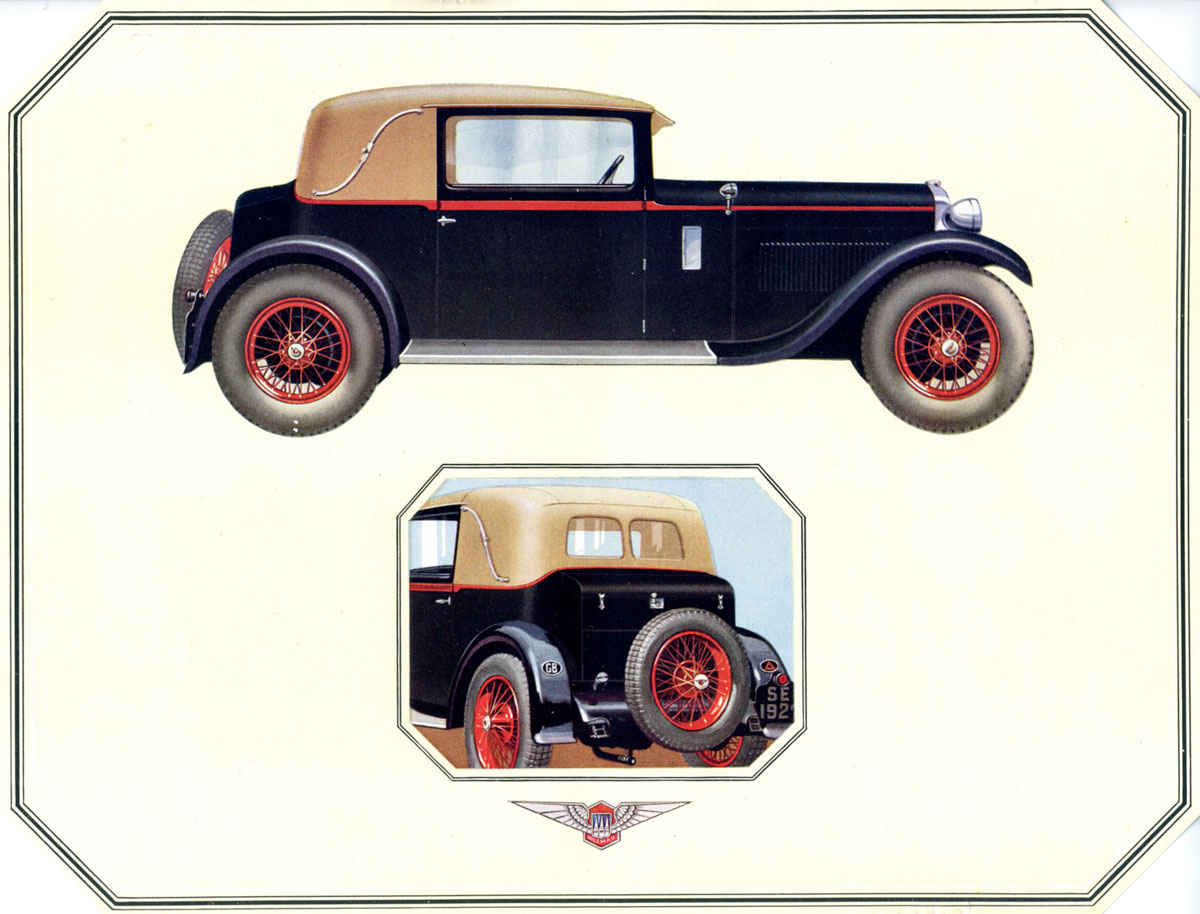

Subscribe for updates
Get our latest news and events straight to your inbox.